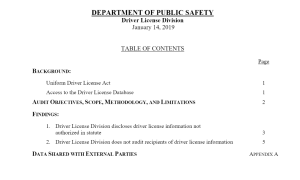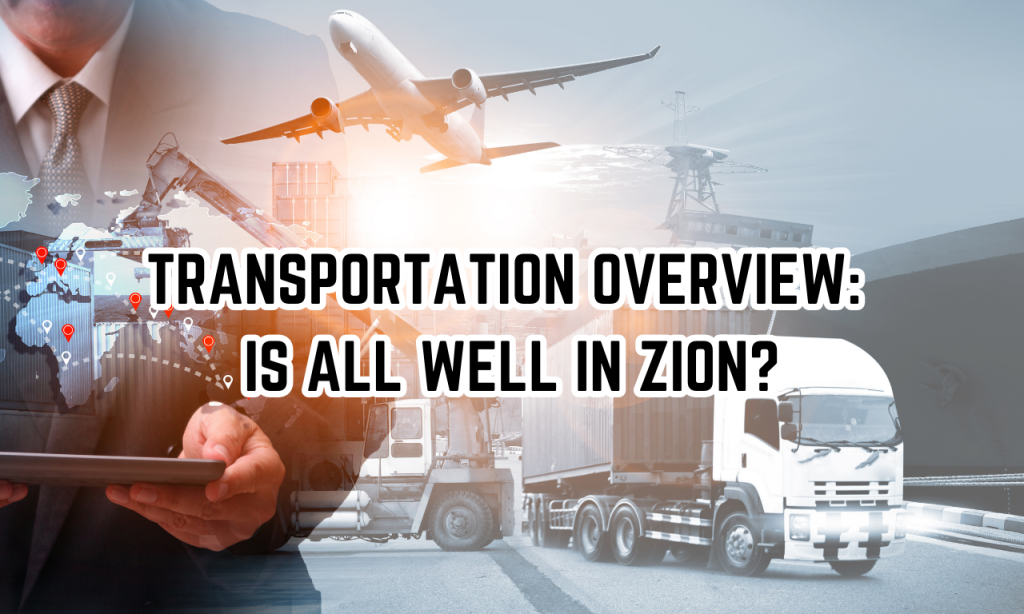Update on this: Transportation is where the bodies are buried. A large majority of catastrophic infrastructure policies and more are implemented and put into law during these meetings.
Utah has not passed SB125 (2023) which electrifies our entire transit system. This is not sustainable nor affordable. People need to engage on why this was approved and ask that it be held.
The timeline for the “SMART” rollout in Utah is below:
The significant investment in fiber connectivity statewide made over the past several years puts Utah in a unique position to take the ideas behind Smart Cities to the next level and deploy the first Smart State in the nation. This program will continue to provide connectivity benefits to citizens around the entire state—urban and rural. Utah Connected leverages significant previous investment enhancing the benefits Utah already enjoys, including the State’s extensive fiber optic network, statewide signal interconnectivity, existing performance management, a soon-to-be operational Connected Vehicle corridor — also a first in the nation — and road weather and active traffic management field equipment. State-wide probe data from a third party, in the final stages of procurement as of this submission, will be used to support the deployment of the Utah Connected program. Our support from the State Legislature is considerable and consistent, and Utah is home to the “Silicon Slopes” program (https://siliconslopes.com), welcoming software companies throughout the nation to spur innovation and incubate new ideas.
https://ops.fhwa.dot.gov/fastact/atcmtd/2017/applications/utahdot2/project.htm
Author: Charles
In this blog we will go over a high level view of transportation in Utah. There will be more coming on this topic, but this should get your started on places to research. Hint start looking into the WFRC and the Inland Port.
To a large extent, Utah’s transportation projects, plans, and priorities are directed by planning organizations. The Wasatch Front Regional Council (WFRC) is the designated planning organization for the Salt Lake City / West Valley City and Ogden-Layton urbanized areas and includes the I-15 corridor between Tremonton and Willard, and Weber, Davis, and Salt Lake counties. In 2019 the WFRC with involvement of regional growth committees, Utah Department of Transportation, Utah Transit Authority, and others, the WFRC developed and approved the Wasatch Front 2019-2050 Regional Transportation Plan. (WFRTP) https://wfrc.org/vision-plans/regional-transportation-plan/2019-2050-regional-transportation-plan/
The plan addresses the items below for the areas and counties outlined from 2019 through the year 2050, updated every 4 years, and designed to conform with Federal and State transportation, infrastructure, and environmental laws and regulations. The WFRTP addresses
- Desired local and regional growth and infrastructure
- Maintenance of the existing transportation system
- The regional road system
- High-capacity transit opportunities
- Active transportation networks
Quoting from the Plan – “The 2019-2050 RTP is the transportation element of the Wasatch Choice 2050 Vision [ https://wfrc.org/wasatch-choice-regional-vision-wcrv/ ], our region’s shared blueprint for regional transportation, local land use, and economic development. This means that the 2019-2050 RTP’s planned investments and recommended policies seek to help our Region achieve ten regional goals adopted by WFRC, as listed blow in no particular order
- Livable and healthy communities;
- Access to economic and educational opportunities;
- Manageable, reliable traffic conditions;
- Quality transportation choices;
- Safe and user friendly streets;
- Clean air;
- Housing choices and affordable living expenses;
- Fiscally responsible communities and infrastructure;
- Sustainable environment including water, agricultural, and other natural resources; and
- Ample parks, open spaces, and recreational opportunities.
Therefore, the 2019-2050 RTP is considered within a broad perspective of how transportation infrastructure can work with both land and economic development decisions to maximize overall quality of life…
This planning process is coordinated with statewide transportation partners to develop common goals, planning time horizons, performance measures, and financial assumptions, which collectively form Utah’s Unified Transportation Plan (UTP) [http://unifiedplan.org/ ] ”. The other planning organizations involved are the Mountainland Association of Governments (MAG – includes Utah & Wasatch Counties), Cache MPO, & Dixie MPO each with projects, funding, and priorities within their geographic areas.
While there would be little disagreement with the goals as outlined, there are a few items of concern –
- Insider Benefit
Safeguards ought to be put in place with regard to the “the region’s shared blueprint for regional transportation, local land use, and economic development” in order to ensure that transportation infrastructure investment is indeed supporting “shared” land use and economic development and not a tool for personal gain by insiders – is the transportation investment responding to a need/goal or, in reality, creating an opportunity for an entity/person directing or influencing that investment?
- 4th and 5th Amendment and right to privacy concerns
Utah is a high-tech state; it is arguable that the people of Utah “are in love with” technology. This potentially leads to the citizenry giving up rights for convenience and/or real or perceived efficiency.
In the “Connected and Autonomous Infrastructure” section of the UTP the need to consider the impact of Connected Vehicle and Autonomous Vehicles is acknowledged.
“Managed Motorways” (smart roads) are part of the UTP and are already implemented in several sections of Utah highways including pretty much all recent and new construction.
In the “Road Usage Charge” section of the UTP, the option of a mileage tax as a potential to replace the fuel tax as the primary transportation infrastructure funding source due to greater use of electric vehicles is outlined, including the pilot trial of 53,000 vehicle owners implemented in 2020.
While there are safety, environmental, efficiency, and quality of life benefits resulting from Connected and Autonomous Vehicles and Managed Motorways, detailed individual travel data, identification, and other personal information would be an additional result. Either that same data would need to be harvested for implementation of a road usage tax or the vehicle owner would have to report it. Most plans give some acknowledgement of the potential concern for data privacy, but generally, the expected solution is some form of regulation limiting who has access to that data and under what circumstances. Unfortunately, recent historical compliance to such safeguards has been poor at best by both the federal government. This is also true of state government departments – see Report No. IT 18-02 Review of Data Sharing Practices for the Driver License Database January 14, 2019

In this report it is outlined that the statutory regulation specifies that the Driver License Division “may only disclose personal identifying information when the division determines it is in the interest of public safety”. Other no-identifying information is “classified and disclosed in accordance with Government Records Access and Management Act (GRAMA). As outlined in the report “Additional provisions are made in stature for specific circumstances where DLD may disclose applicant information independent of the restrictions above. Entities to whom DLD is specifically authorized to disclose applicant information include:
- Licensed private investigators with a legitimate business need
- Motor vehicle insurance companies
- Organ procurement organizations
- Licensing authorities of other states
- Specific departments of the Utah state government
- U.S. Department of Defense
Statute authorizing disclosure of applicant information generally specifies what information may be shared with a particular “entity.”
According to the report, DLD shared unauthorized information with the Tax Commission, University of Utah, Office of State Debt Collection, among others. How can it be ensured that personal travel, vehicle, and identification (such as facial recognition) information will not be shared with unauthorized entities/individuals? What can be done to ensure that authorization is not given to entities that should not have it pursuant to privacy rights and the 4th and 5th amendments? With the implementation of connected and autonomous vehicles what safeguards are, or can be, put in place to guard each person’s constitutional right to liberty and property?
There will certainly be a push again in the next legislative session for Digital Driver Licenses. As presented, implementation would result in broad and unintended sharing of more than just driver license data, and that data would be subject to abuse by criminal and ill-intended political actors, foreign and domestic.
- Electric Vehicles
The U.S. Department of Transportation is pushing for investment in and subsidization of Electric Vehicles (see https://www.transportation.gov/rural/ev/toolkit). Utah may be pressured into following that direction. If electric vehicles become a majority of vehicles operated based on market forces, that will likely result in optimal use of resources. If it is a result of government “knowing what’s best”, it will likely be costly both to the economy and most likely the ecosystem as well. Before committing to complete electrification of transportation, it would be wise to first consider the question of where the energy to power the vehicles will come from? Solar, wind, and hydro do not have the capacity to meet non-transportation energy needs let alone additional capacity for charging EVs, and have significant unintended ecological consequences. If the idea is to eliminate or minimize fossil fuel energy generation, there is only one current source with the potential capacity to generate the extra power needed to charge vehicles – nuclear. Unless and until, that practical reality is acknowledged and put in the plan, or some other alternative source is developed, electric vehicles should not be a universal goal or government initiative.

